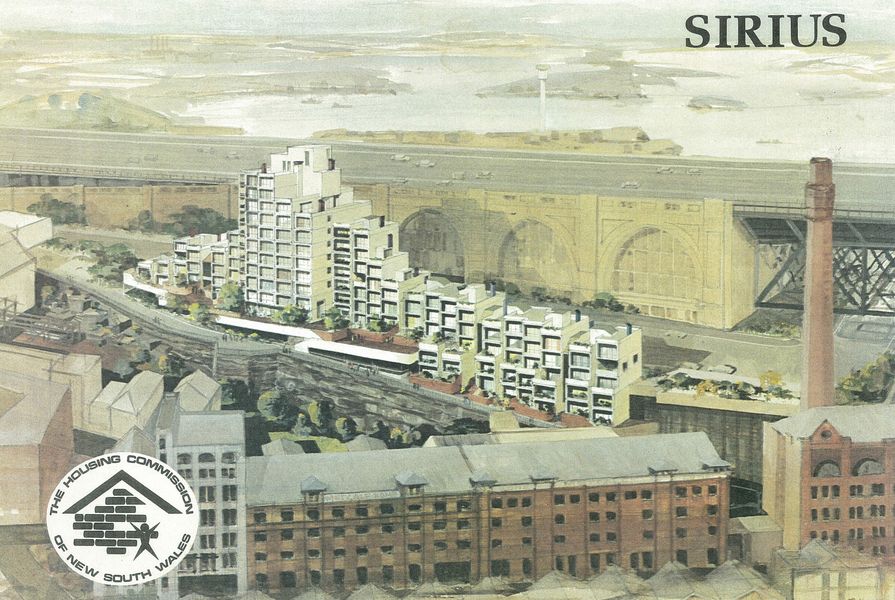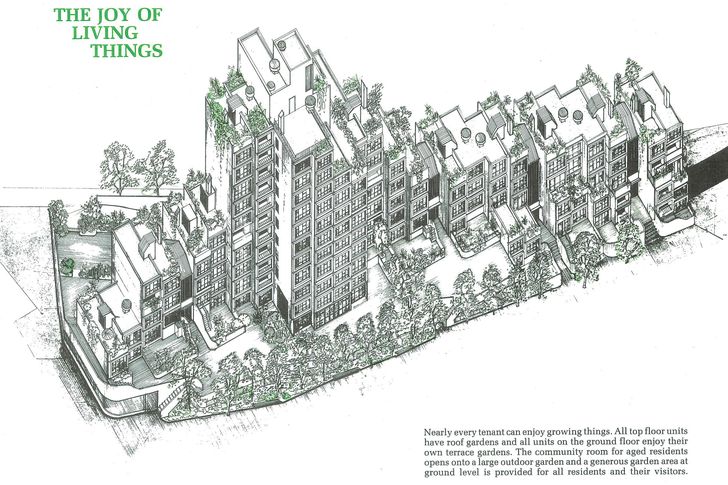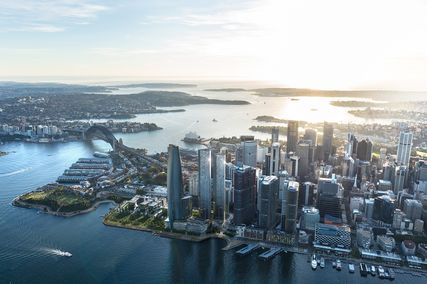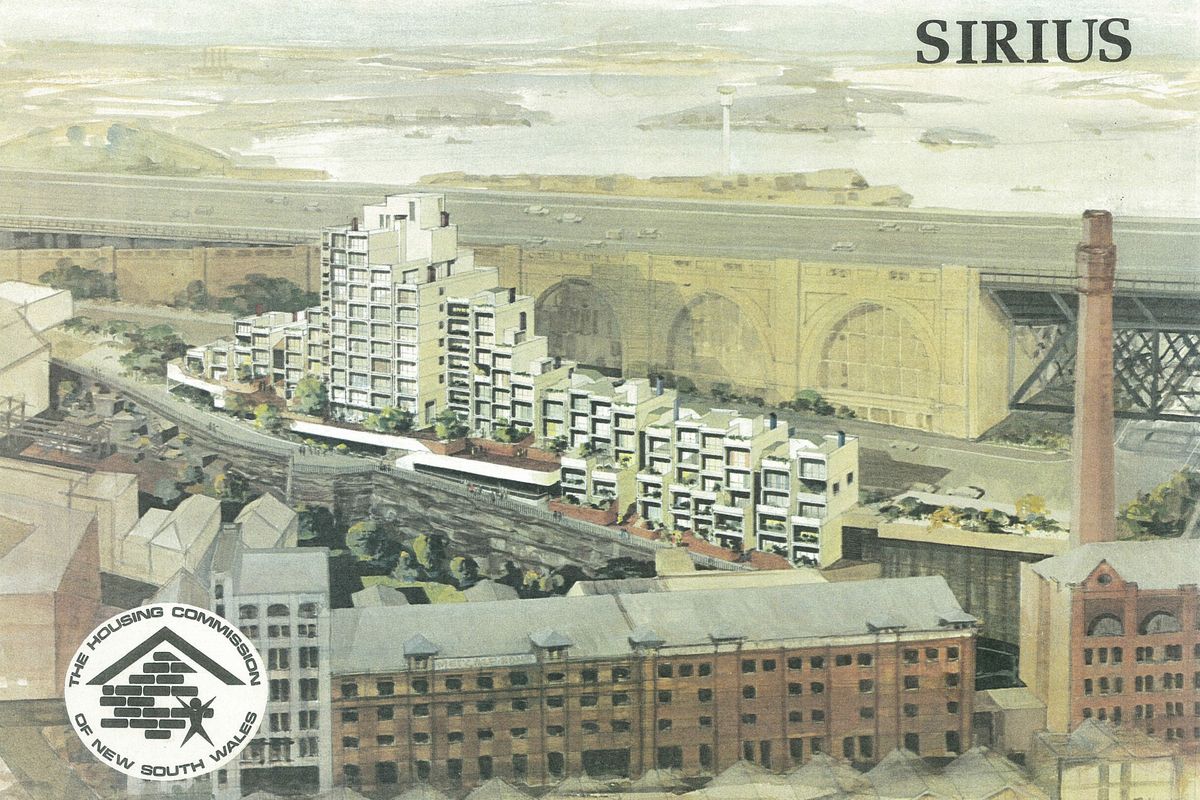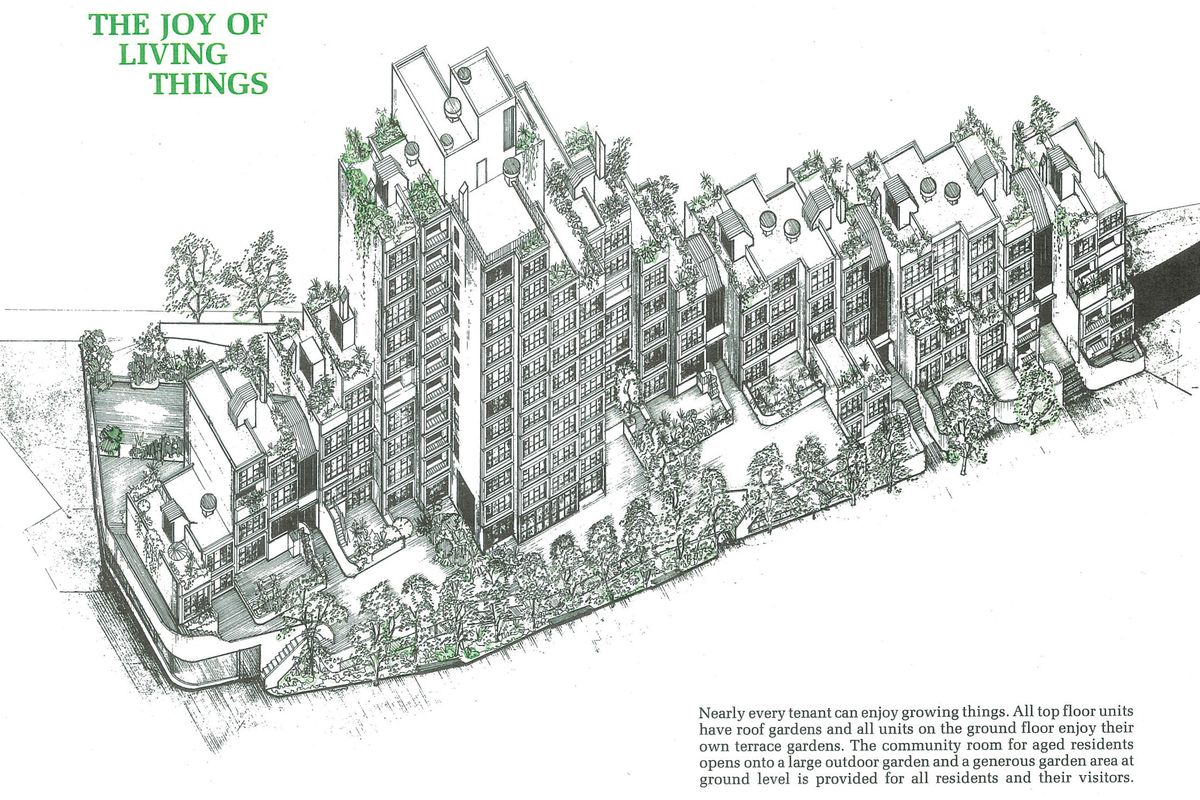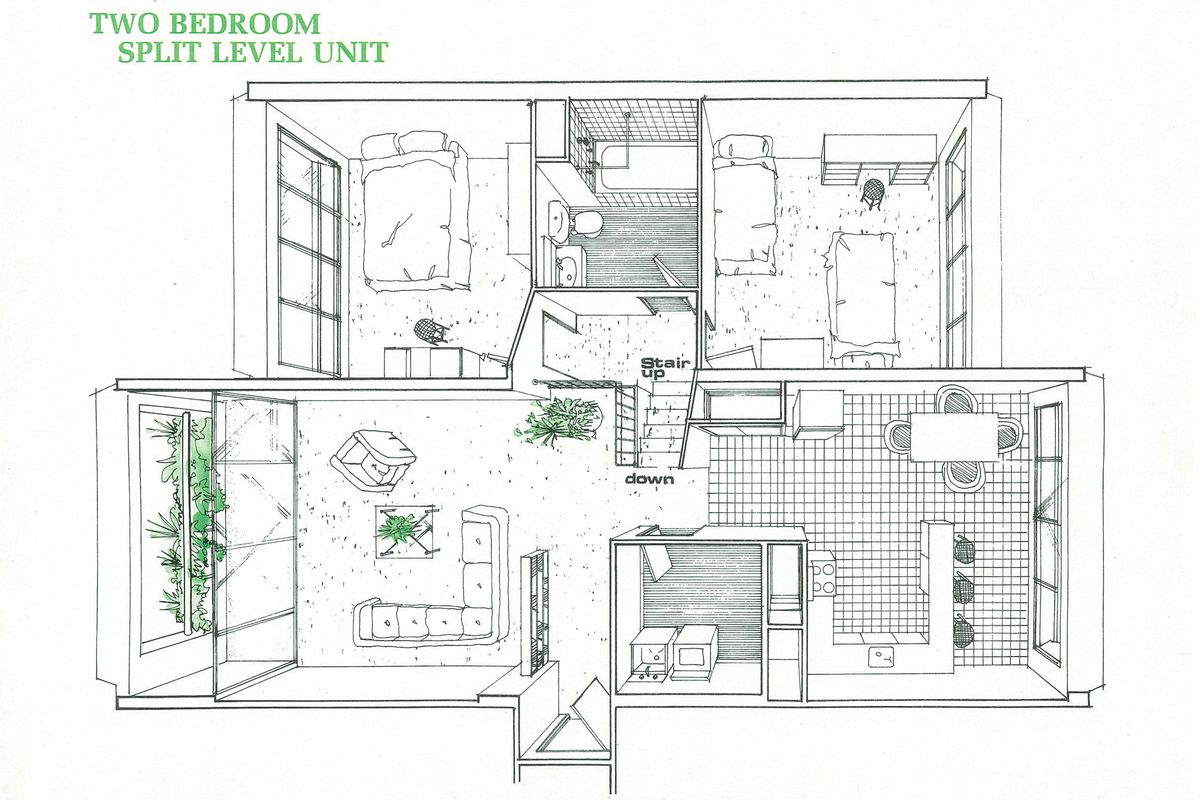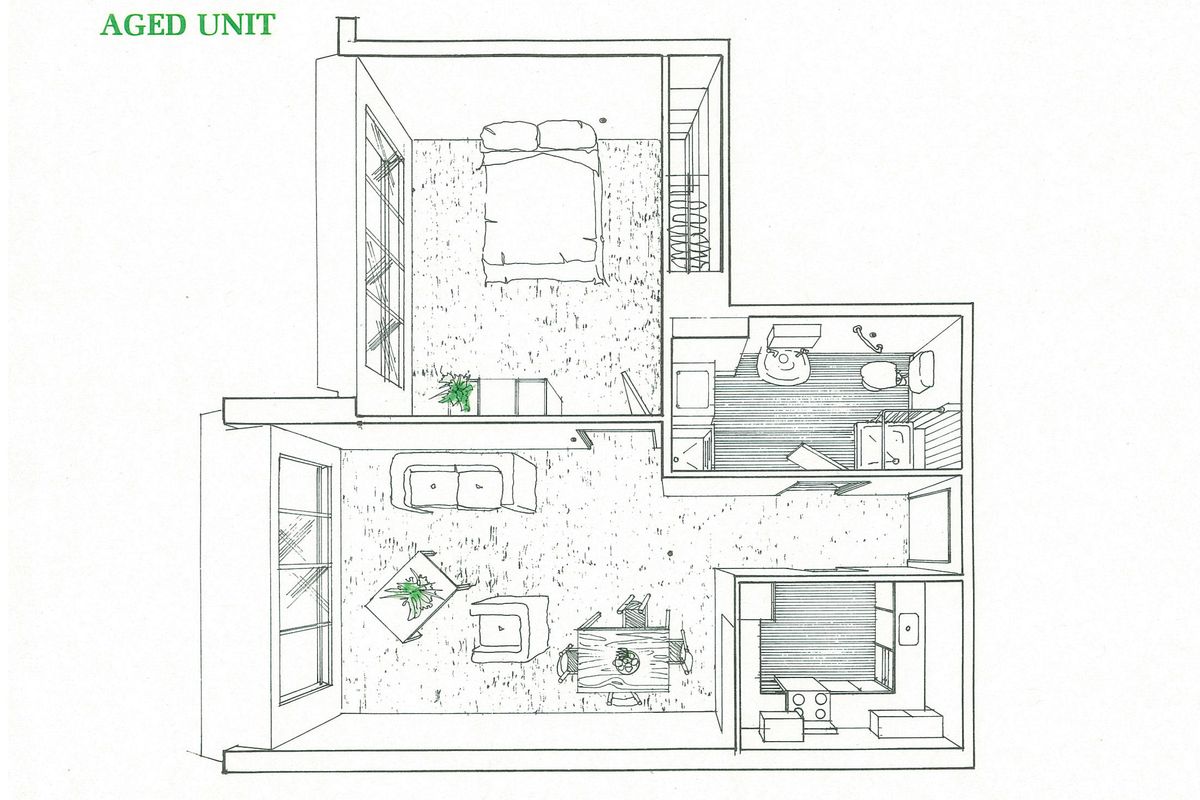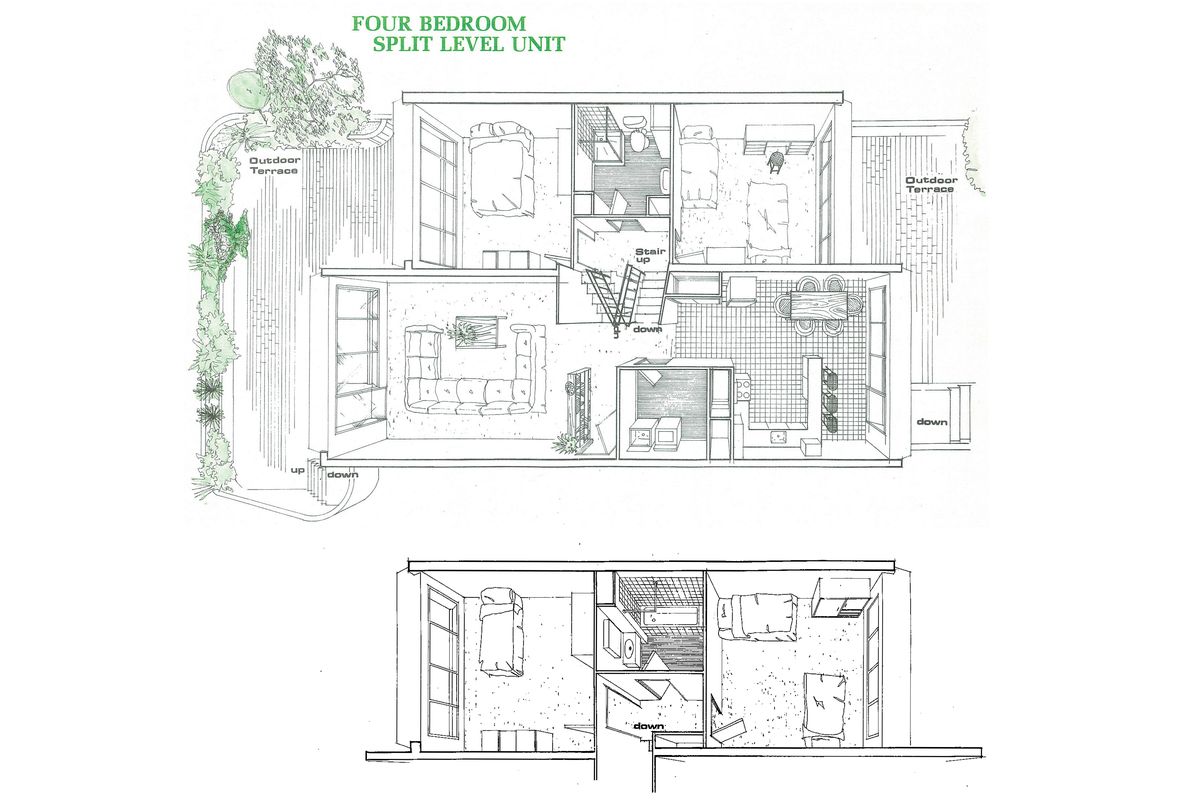On Sunday 31 July 2016, the future of Sydney’s Brutalist Sirius apartment building became more uncertain. In a media release, NSW Minister for Heritage Mark Speakman refused to grant the building statutory protection by declining to list it on the State Heritage Register. Analysing this decision together with comments made recently in the media, it is clear that the matter of the future of this building – recognized as being of state (if not national) significance – has indeed become most serious.
The Sirius apartment building, located at 36–50 Cumberland Street, The Rocks in Sydney, was designed in 1975 by Tao Gofers for the NSW Housing Commission and completed in 1980 as a public housing complex for more than 200 residents. Under the current ownership of the Government Property NSW (GPNSW) and the NSW Land and Housing Corporation (LAHC), the building has had little to no maintenance and is now deteriorating through the deliberate process of “wilful neglect.”
In his decision last month, Speakman chose to ignore the advice of his department – the NSW Office of Environment and Heritage. This office oversees the heritage register and in so doing provides exemplar buildings with the necessary statutory protection that a register listing may provide under the NSW Heritage Act. The Office of Environment and Heritage includes the Heritage Council, which recommends items for listing on the heritage register. On receipt of the council’s advice, the Minister is required to make a decision within two weeks of receiving it. However, in the case of Sirius, Speakman took more than six months to announce his decision.
As part of the nomination process, the Heritage Council included an expert opinion of the aesthetic value of the building and its representation of Brutalism from one of Australia’s leading architectural historians – University of Melbourne professor Philip Goad. He recommended that the building be listed. The NSW Chapter of the Australian Institute of Architects, the National Trust, Docomomo and Australia ICOMOS all supported the Heritage Council’s assessment of the significance of the building and its need for protection. Mainstream media coverage shows that vociferous critics of the building’s aesthetics are balanced with a range of staunch supporters of the building’s need for statutory protection – thus demonstrating that the conversation goes far beyond the limits of the architectural community.
In Speakman’s media release, there is a level of prejudice that cannot be ignored. While the Heritage Council made its recommendation on the grounds of state heritage significance, the minister chose to reject this advice on the grounds of financial hardship. But the heritage significance of Sirius and its sale value are two separate issues. Alarmingly, Speakman’s statement reads: “I am not listing it because whatever its heritage value, even at its highest that value is greatly outweighed by what would be a huge loss of extra funds from the sale of the site, funds the government intends to use to build social housing for families in great need.” In making its recommendations, the Heritage Council must take into account whether the conservation of the item – that is, the process of looking after it – would cause undue hardship for the owner. In the case of Sirius, the government has not claimed that keeping the building would cause financial hardship. Instead, it has rejected the advice of its heritage experts on the grounds that “listing the building would reduce the site’s sale value by many tens of millions of dollars.” It has looked beyond the heritage significance of Sirius to the development value of its site. In other words, it is a conflict of interests. The argument is also at odds with the ongoing sale of state heritage listed assets within nearby Millers Point: Each of these small terraced houses, being sold by LAHC on behalf of the NSW state government with strict heritage documents forming part of the contract of sale, are commanding top dollar at auction.
The publicity brochure shows how Sirius is designed to enable all tenants to have access to gardens.
Image: Courtesy AIA NSW Chapter digital archive
The site is significant not only for its architectural importance, but also for its cultural legacy. In the last few weeks, the heritage consultant engaged by Housing NSW has made statements to the media claiming that the construction of Sirius did not have a direct relationship with the NSW green bans movement. However, these claims conflict with published accounts of the building when completed. Through the green bans campaign, the NSW Government learnt some painful lessons about respecting community values and as a consequence the NSW state government (under Premier Neville Wran) introduced the NSW Heritage Act (1977). Sirius is a physical reminder of that campaign and its aftermath.
Sydney Brutalism was more than an architectural style and was incorporated in range of public buildings with significant social intentions. The Sirius apartment building is undoubtedly an important project of this era. Well-conceived and skilfully designed to suit its site and the needs of its inhabitants, it is a physical reminder of the green ban campaign and the community values of the 1970s. Consequently it symbolizes the power of community reaction combined with a revised thinking in architectural circles about how to appropriately house large numbers of low-income residents in a contextual way – and well before any use of postmodern pastiche. The Sirius apartment building is a rare and intact example of late Brutalist architecture in Australia as applied to social housing. And as a significant example of cultural heritage, it doesn’t get any better than this.
The author wishes to acknowledge the NSW Chapter of the Australian Institute of Architects for its assistance with the information contained in this essay. The NSW Chapter is behind the Save Our Sirius campaign, which is currently raising funds to seek legal advice on having the Minister for Heritage’s decision not to list Sirius reviewed and annulled. For further information on the campaign, visit: startsomegood.com/SaveOurSirius

